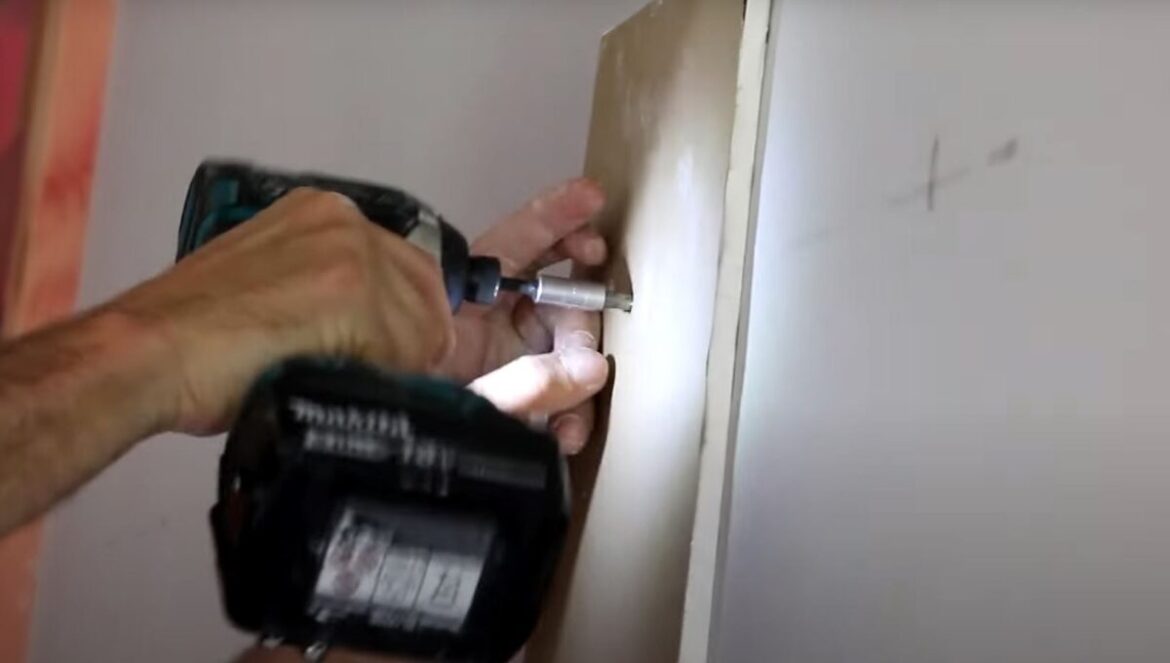Is GIB Board Flammable?
Unravelling Gib Board: The Science Behind Its Flammability
What’s Behind the Wall? The Basics of Gib Board
Gib board, often referred to as plasterboard or drywall in other parts of the world, is a standard material used for interior wall and ceiling linings. Comprised primarily of gypsum plaster pressed between thick sheets of paper, it’s become a trusted material in many Auckland homes, from the buzzing streets of Ponsonby to the tranquil lanes of Remuera.
Is Gib Board Really Flammable?
While it may seem counterintuitive, the primary component of gib board, gypsum, is actually non-flammable. Gypsum contains water molecules bonded within its structure. When exposed to high temperatures, this water is gradually released as steam, preventing the board from catching fire. This inherent characteristic makes gib boards a good fire-resistant building material.
The Science of Gypsum
Gypsum is a mineral composed of calcium sulfate dihydrate. When exposed to fire or high temperatures, the chemically combined water in gypsum is slowly released as steam, ensuring the temperature of the board remains under control. This phase change and the energy consumed in the process give gib board its fire-resistant property. However, the outer paper layer can be a combustible material, which means while the core isn’t flammable, the surface can catch fire if not treated properly.
Beyond the Basic: Varieties of Gib Board
Auckland’s construction scene boasts a variety of gib boards tailored to specific needs:
Standard Gib Board:
- Use Cases: Suitable for general interior use.
- Material Ingredients: Gypsum core with paper lining.
- Weaknesses: Paper surface can be combustible.
- Flammable Rating: Low-Medium, due to the paper surface.
- Mitigating Measures: Ensure minimal exposure to open flames; apply fire-resistant paint or coating.
Fire-Resistant Gib Board
- Use Cases: Ideal for use in fire-prone areas or as firewalls.
- Material Ingredients: Gypsum with added fire-resistant materials.
- Weaknesses: Slightly more expensive.
- Flammable Rating: Low.
- Mitigating Measures: Used in conjunction with other fire-resistant materials.
Moisture-Resistant Gib Board:
- Use Cases: Best for bathrooms and kitchens where moisture is prevalent.
- Material Ingredients: Gypsum with water-resistant additives.
- Weaknesses: Not suitable for complete water immersion.
- Flammable Rating: Low-Medium.
- Mitigating Measures: Ensure good ventilation and avoid exposure to open flames.
Health and Safety Aspects
Your Plasterers Auckland always emphasizes that regardless of the type of gib board used, safety measures must be in place. While fire-resistant gib board provides an added layer of protection, it’s crucial to combine it with other fire-resistant measures like alarms and extinguishers. Additionally, during the installation or renovation process, be mindful of the dust produced from cutting or shaping the board, as prolonged inhalation can be harmful.
Exceptions to Gib Board’s Fire Resistance
Gib board, with its foundational gypsum core, indeed provides some level of fire resistance. But just like any material, it has its limits. When making decisions about building or renovating homes in Auckland, whether it’s a trendy Ponsonby loft or a classic Remuera villa, understanding these limitations is crucial.
Prolonged Exposure to High-Intensity Fires
While the gypsum core can fend off average household fires by releasing water in the form of steam, extreme temperatures from high-intensity fires can be a game-changer. If a fire burns hot and long enough, even the water in the gypsum can eventually evaporate. Once that happens, the structural integrity of the gib board can be compromised.
Surface Combustibility
The outer layer of a standard gib board, usually made of paper, can catch fire. When exposed to direct flames, this layer can ignite and allow the fire to spread, particularly if there are other combustible materials nearby.
Improper Installation
The way gib board is installed can also influence its fire resistance. Boards that aren’t properly secured or have gaps can provide avenues for flames to find their way behind the board. Additionally, spaces or voids behind the gib board can act as chimneys, allowing heat and flames to rise and spread more quickly.
Presence of Other Combustibles
The fire resistance of a gib board wall or ceiling can be adversely impacted if it’s combined with highly flammable materials. For instance, if insulation behind the gib board is combustible, or if flammable adhesives are used excessively, they can compromise the fire-resisting properties of the gib board.
Damaged or Compromised Boards
Over time, gib boards might suffer from wear and tear, moisture damage, or other structural compromises. Any damage can diminish the board’s fire-resistant properties, making it more susceptible to catching fire. Regular inspections and maintenance are pivotal in ensuring that the boards retain their safety characteristics.
In the ever-evolving landscape of Auckland’s construction scene, understanding these exceptions is more than just technical knowledge. It’s about ensuring homes are both beautiful and safe. Collaborating with experts like those at Your Plasterers Auckland can offer not just peace of mind, but also practical insights into making the best choices for your living spaces.
Final Thoughts: The Right Gib Board for Your Auckland Home
Deciding on the type of gib board that fits the specific needs of your property requires a solid understanding of its characteristics and properties. With expert guidance from professionals, such as those at Your Plasterers Auckland, ensuring the safety and aesthetics of your home becomes a seamless process.
Table: Gib Board Varieties in Auckland
| Gib Board Type | Benefits | Disadvantages | Use Cases | Material Ingredients | Weaknesses | Flammable Rating | Mitigating Measures |
| Standard | Economical; Easy to install | Combustible paper surface | General interior use | Gypsum with paper lining | Combustible paper surface | Low-Medium | Fire-resistant paint/coating |
| Fire-Resistant | Enhanced fire protection | Slightly costlier | Fire-prone areas | Gypsum with fire-resistant materials | Higher cost | Low | Use with other fire-resistant materials |
| Moisture-Resistant | Resists moisture and mould | Not for full immersion | Bathrooms, kitchens | Gypsum with water-resistant additives | Not immersion-friendly | Low-Medium | Good ventilation; avoid open flames |
Frequently Asked Questions on Gib Board’s Flammability
Is the core material of gib board flammable?
No, the primary component of gib board, gypsum, is non-flammable. It contains water molecules that release as steam when exposed to heat, giving gib board its fire-resistant property.
Can the outer surface of gib board catch fire?
Yes, the paper lining on standard gib board can catch fire when directly exposed to flames. However, there are fire-resistant gib boards available that offer added protection.
How do fire-resistant gib boards differ from standard ones?
Fire-resistant gib boards contain additional fire-retarding materials mixed with the gypsum. This enhances the board’s resistance to fire compared to the standard variety.
Do damaged gib boards pose a higher fire risk?
Yes, damaged or compromised gib boards can have reduced fire-resistant properties. Any wear, tear, or moisture damage can make them more susceptible to fire.
Does the installation method impact gib board’s fire resistance?
Definitely. Improperly installed gib boards, with gaps or spaces, can provide pathways for flames and heat, reducing their effectiveness as a fire barrier.
Are there other materials used in conjunction with gib board that can impact its fire resistance?
Yes, if gib board is paired with combustible materials like certain types of insulation or flammable adhesives, it can compromise the overall fire resistance of the wall or ceiling.
How often should gib boards be inspected for potential fire risks?
It’s advisable to inspect gib boards during regular home maintenance checks, at least annually. Look out for any damages, wear, or moisture issues that might reduce its fire resistance.
Key Takeaways: Gib Board and Fire Safety
Gypsum Core Offers Fire Resistance The primary ingredient in gib board, gypsum, has inherent fire-resistant properties due to the water molecules it contains. When exposed to heat, these water molecules are released as steam, slowing down the spread of fire.
Surface Material Can Be Combustible While the core might be resistant to fire, the paper surface of standard gib boards can ignite if exposed directly to flames. This highlights the importance of considering the entire board structure when evaluating fire risks.
Installation Matters Proper Gib board installation is paramount. Gaps, improperly secured boards, or spaces behind the gib board can reduce its effectiveness as a fire barrier, emphasizing the importance of hiring professionals for GIB board installation and GIB Fixing.
Not All Gib Boards Are Equal There are various types of gib boards available, with some specifically designed to be more fire-resistant than standard ones. When safety is a primary concern, opting for these specialized boards can make a difference.
Regular Maintenance Enhances Safety Like all building materials, gib boards can degrade over time. Regular inspections and addressing any wear, tear, or damage promptly will ensure that the boards retain their fire-resistant properties.

